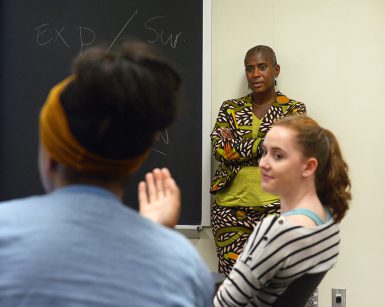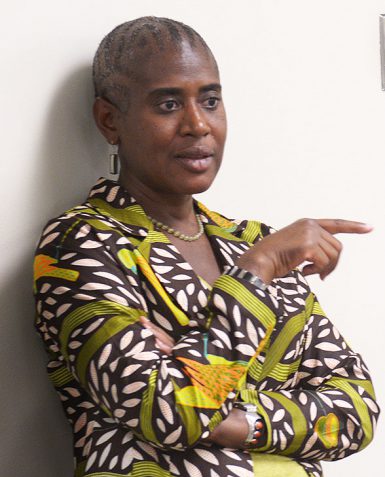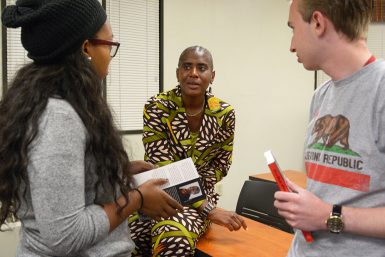Freelancer, author Donna Bryson shares pointers in workshop

Journalist and former foreign correspondent Donna Bryson gave tips to students on how to break into freelance journalism during a visit to campus last week.
Bryson, a former Associated Press bureau chief who’s reported from South Africa and India, is herself a freelance journalist based in Denver. She’s also the author of It’s a Black and White Thing, which recounts how one South African university addressed race relations post-apartheid.
She said that freelance writers have to learn to pitch a story well if they’re to stand out from the crowd.
“I still feel I’m learning all the time,” Bryson said during a public workshop open to student journalists.
Bryson said that she’s learned that having an idea for a story isn’t enough. Freelance writers not only have to possess an idea, but also frame it to convince an editor it’s right for the intended publication.
“There are a lot of good ideas out there,” Bryson said. “But you have to convince your editor that you’re the person for the story.”
Bryson walked students through the process of making a pitch. With an idea in mind, Bryson said she sends emails to the editors of multiple publications to see if editors are interested in publishing the story. Sometimes, she receives replies in hours, and other times, it takes weeks.

“The pitching process can take months,” Bryson said, “even to the point of changing the story.”
She said that’s because an editor might not respond to a pitch for a few weeks, and even if there is a response, the ongoing conversation between the reporter and the editor will extend so long that the story might change over time.
“Don’t be timid,” Bryson said. “If you don’t hear back from an editor, it’s not because your idea is bad. That’s unlikely.”
Because of the potential time frame, Bryson advised students not to pitch story ideas based on an event because an event could come and go by the time the editor approves a story idea. When editors do respond for story ideas, Bryson said rely rely on the reporter to deliver on the story.
“The editors will be taking your story to a story meeting with a calendar and dates,” Bryson said. “And then they’ll get back to you.”
Bryson said freelancers can make themselves stand out if they’re able to go the extra mile beyond reporting and take photos. It saves the publication money, and it’ll likely earn the reporter more money.
“What do you pay?” Bryson said she asks publications. “What will you pay for some photos as well?”
Bryson said students don’t need to follow her example of international reporting to be successful in the freelance industry.
“I was driven to go overseas because I wanted a challenge,” Bryson said. “But a lot of people can find that challenge court reporting in Indianapolis.”

Joe Coleman, a professor of practice teaching MSCH-J360 Best in International Reporting, said he invited Bryson to talk to students because her work covering racial injustice in South Africa partly mirrors journalism on racial issues in the United States.
“South Africa was one of the places I wanted to look at,” Coleman said. “I thought this would be a good opportunity to look at racial turmoil in this country.”
Coleman, former AP bureau chief in Tokyo, worked Bryson, and they collaborated on several international assignments.
In addition to the workshop, Bryson met with students in Coleman’s class and talked about her career over a brown bag lunch with students and faculty.

